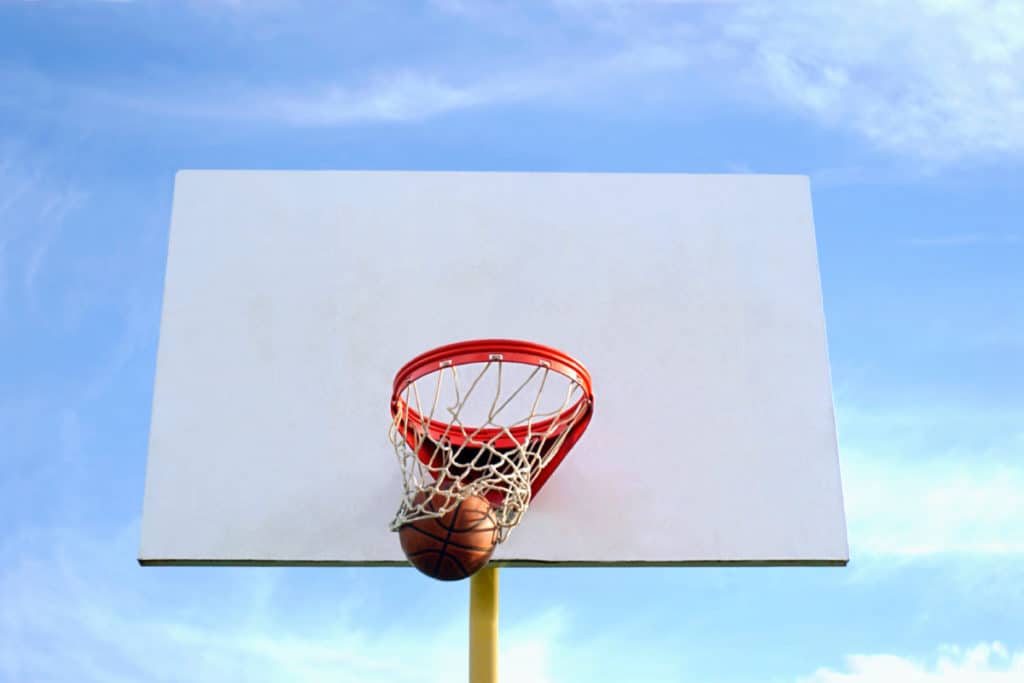Home »
Misc »
How many feet is a basketball hoop from the floor
How many feet is a basketball hoop from the floor
How Tall is a Basketball Hoop - Has it Ever Changed in Height?
Ever wonder what the height of a basketball hoop is when watching a game? A lot has changed over the years in professional basketball from the concept of dribbling, the three-point line, the basket itself, and even the backboard material, but one thing remains consistent: how tall an NBA basketball hoop is. A professional basketball hoop is always teen feet high from the floor to the top of the rim.
So why is the basketball hoop height ten feet high off the ground? Is the size of the hoop the same across the WNBA, FIBA, NCAA, High School, and more? Here is the complete breakdown of the height of a regulation basketball hoop!
Why is a Basketball Hoop Ten Feet Off the Ground?
James Naismith was the inventor of the game of basketball in 1891 out in Springfield, Massachusetts. During that year, he hung peach baskets off the running track guard railings at the YMCA, ten feet off the ground, for players to shoot at.![]() After every basket made by a player, the game would pause to get a ladder to retrieve the ball, which was a soccer ball, at that time.
After every basket made by a player, the game would pause to get a ladder to retrieve the ball, which was a soccer ball, at that time.
Eventually, iron hoops and a net replaced the peach baskets, which removed a ladder to retrieve a ball during a game.
How Do you Measure the Ten Feet for a Hoop?
The ten-foot measurement for a basketball hoop is from the height of the rim to the floor. The teen feet measurements are not from the bottom of the net, which fans might not know. The height takes the top of the rim since that is how high the ball needs to be to go into the hoop.
How Tall is a Basketball Hoop in the NBA?
A professional NBA hoop is ten feet from the top of the rim to the bottom of the floor. However, while the hoop’s 10 feet is the same, the average height of basketball players continues to grow over the years, which is why dunking is more common in today’s game. According to The Hoops Geek, players from the 2021 – 2022 season were 6’6″ tall on average. Back in 1952, the average height of a player was 6’4″ tall.
Back in 1952, the average height of a player was 6’4″ tall.
How Tall is a Basketball Hoop in the WNBA?
A WNBA hoop stands at ten feet tall from the top of the rim to the base of the floor. According to TFI Global News, the average height of a female basketball player is 5’11”. Comparing that to the NBA, which is seven inches taller on average, you can understand why dunking is less common in the WNBA.
How Tall is a Basketball Hoop in FIBA?
The basketball hoop for the Olympics and all professional leagues worldwide stands at ten feet tall.
How Tall is a Basketball Hoop in NCAA Basketball Games?
NCAA basketball (men’s and women’s) is ten feet from the top of the rim to the base of the floor.
How Tall is a Basketball Hoop in High School and Middle School?
Basketball hoops in High School and Middle School leagues are ten feet from the base of the floor to the top of the rim.
Does the Rim Height Change in Youth Basketball Leagues?
Youth basketball leagues have different heights for the rim on basketball courts.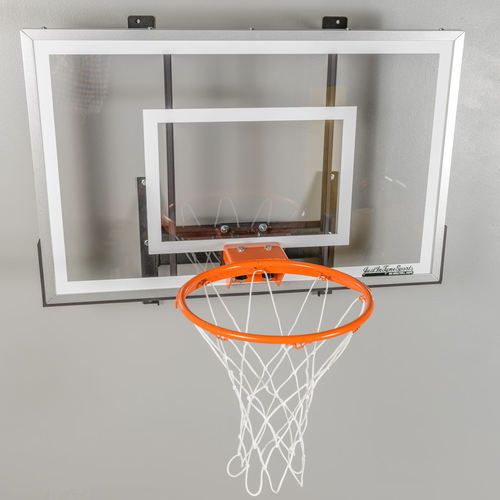 Kindergarten leagues will have hoops being seven feet tall. Meanwhile, fifth graders will have the hoop at nine feet tall. It is not until you get to sixth grade that the hoop goes to standard ten feet height.
Kindergarten leagues will have hoops being seven feet tall. Meanwhile, fifth graders will have the hoop at nine feet tall. It is not until you get to sixth grade that the hoop goes to standard ten feet height.
How Big is the Basketball Backboard?
A regulation-size basketball backboard is 6 feet wide by 3.5 feet tall.
How Big is the Basketball Rim?
A regulation-size basketball rim is 46 inches in diameter.
Did the Hoop Size Ever Change in the NBA?
In 1954, the NBA ran a test raising the basketball hoop to 12 feet for one game. The reason to have 12-foot rims was to stop George Mikan from dominating the game since he was close to seven feet tall. The game that had the test was between the Milwaukee Hawks and the Minneapolis Lakers.
However, that test only lasted one game. The trial concluded that while it did stop George Mikan from dominating, it didn’t produce good results for the game. The hoop being taller made the game even more dominating for taller players to gather rebounds against shorter basketball players.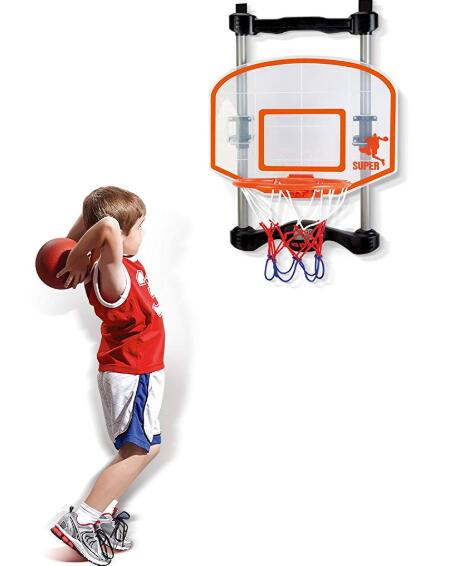
Why Do Basketball Hoops Have a Net?
Basketball first began with peach baskets that players would try to get the ball into when they would shoot. An iron hoop replaced that peach basket as the years went by, which allowed the ball to go through on a successful shot. No longer was a ladder necessary to retrieve balls after a successful shot.
Why Do Basketball Hoops Have an Orange Rim?
During games, the orange rim stands out for fans, coaches, refs, and players to see. The orange paint also helps spot goaltending violations if a player swats the basketball away as it is coming down towards the basket.
Can Players Change the Hoop Regulation Height During a Dunk Competition?
NBA players who partake in the dunk competition always like to put on a show for the fans. In 2009, Dwight Howard did just that by bringing in a basketball hoop that was 12 feet in height. He came out with a superman cape and was able to perform the dunk to the delight of the fans at the All-Star Game event.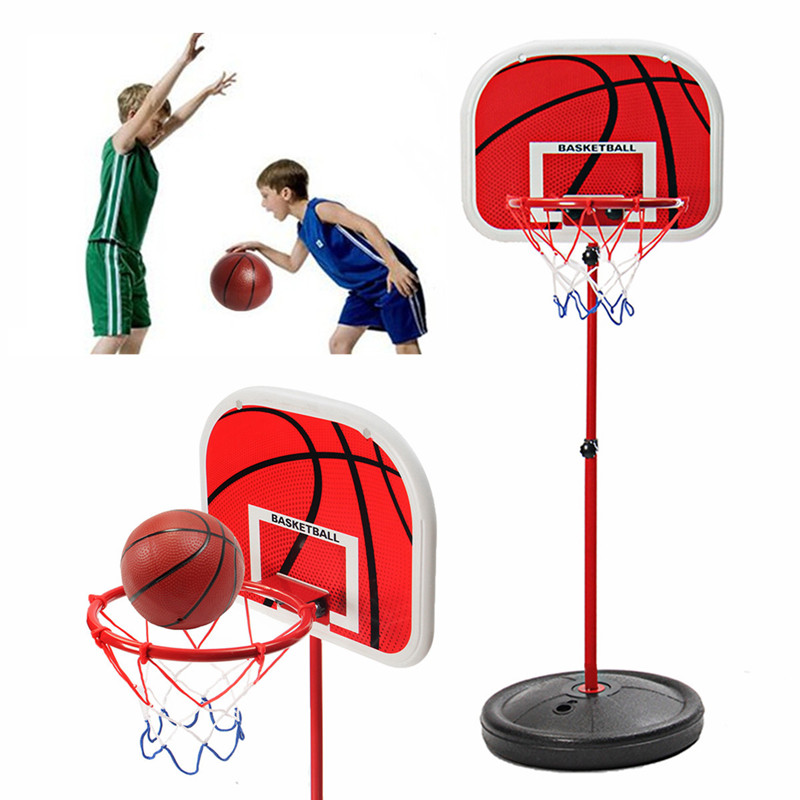
Conclusion: How Tall is a Basketball Hoop?
In summary, a basketball hoop across professional leagues is ten from the top of the rim to the bottom of the floor. The ten-foot height dates back to 1891 when the basketball game took place in a YMCA in Springfield, Massachusetts. During that time, peach baskets were on the railings of the track, and players would shoot a ball into the basket to score points. While many elements of basketball have changed over the years, the height of a basketball has not.
Similar Posts:
Field Goal Basketball
What is a Rebound in Basketball?
Top of the Key Basketball
Technical Foul in Basketball
Basketball Swish
ISO Basketball
Tip off in Basketball
Slam Dunk
Free Throw in Basketball
How Long is NBA Halftime?
Backcourt Violation in Basketball
Double Rim Basketball Hoop
Triple Double in Basketball
Paint in Basketball
How Long is a Basketball Game?
Basketball Court Dimensions and Hoop Height: A Quick Guide
Skip to content
How Big is a Basketball Court?
An NBA basketball court is 94 feet long and 50 feet wide.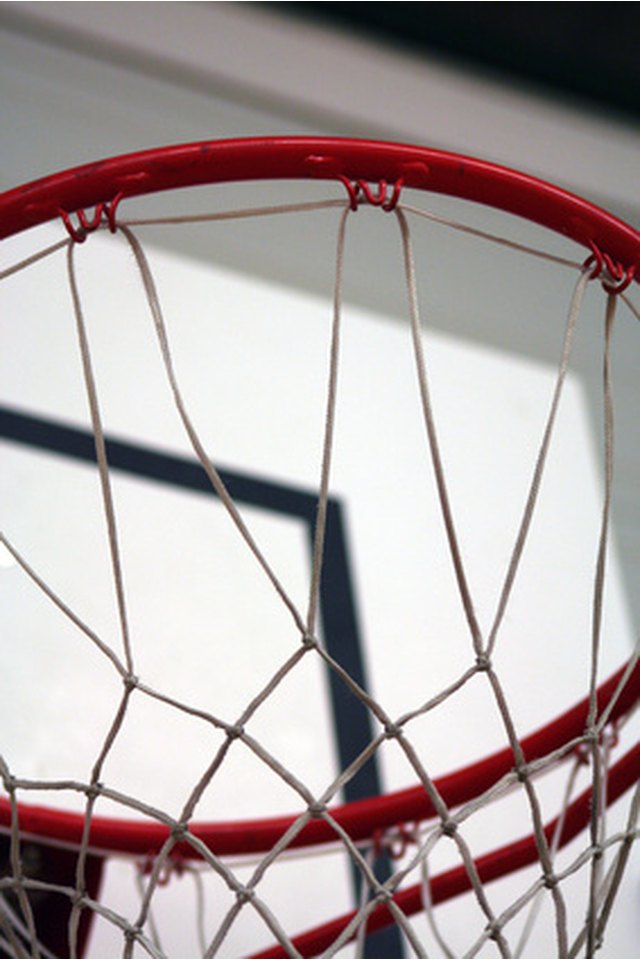 In meters, it’s 28.65 m long and 15.24 m wide. The WNBA and NCAA use an identical court size—94 feet long by 50 feet wide.
In meters, it’s 28.65 m long and 15.24 m wide. The WNBA and NCAA use an identical court size—94 feet long by 50 feet wide.
High school courts are a bit shorter, measuring 84 feet long by 50 feet wide. Junior high courts are even smaller, typically measuring 74 feet long and 42 feet wide. A FIBA court (used during international play such as the Olympics) is 91.86 feet long and 49.21 feet wide.
How Tall is a Basketball Hoop?
For junior high, high school, NCAA, WNBA, NBA and FIBA, the rim is exactly 10 feet off the ground. Rims at every level of play are 18 inches in diameter. Backboards are also the same size at each of these levels. A regulation backboard measures 6 feet wide and 42 inches (3.5 feet) tall.
What is the Distance of the 3-Point Line?
The 3-point line distance varies among different levels of play. The NBA 3-point line is 23.75 feet from the hoop, 22 feet in the corners. The FIBA 3-point line is 22. 15 feet from the hoop, 21.65 feet in the corners. The WNBA uses the same 3-point line as FIBA.
15 feet from the hoop, 21.65 feet in the corners. The WNBA uses the same 3-point line as FIBA.
At the NCAA level, the 3-point line distance is 20.75 feet, for both men and women. At the high school level, the 3-point line distance is 19.75 feet, for both boys and girls. Junior high uses the same 3-point line distance as high school.
What is Distance of the Free-Throw Line?The distance of the free-throw line is measured from a point on the floor directly below the backboard. At the junior high, high school, NCAA, WNBA and NBA levels, the free-throw line is 15 feet away from this point. At the FIBA level, the free-throw line is actually a bit further—15.09 feet from the point.
How Big is The Key?
The size of the key, also commonly referred to as “the paint,” varies among levels of play. In the NBA, it’s 16 feet wide. Same goes for the WNBA. In FIBA, it’s 16.08 feet wide. At the NCAA level, the key is 12 feet wide.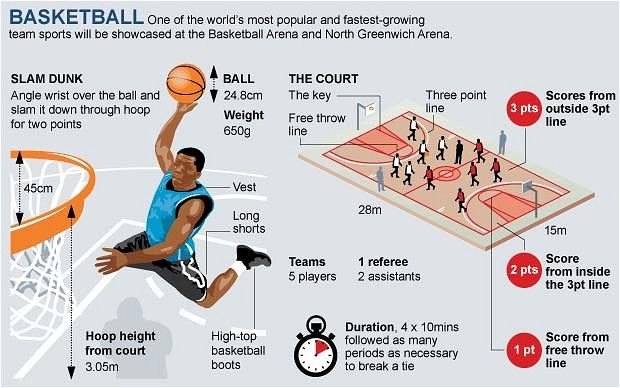 High school and junior high school use the same size key as the NCAA.
High school and junior high school use the same size key as the NCAA.
READ MORE:
- Basketball Sizes: A Quick Guide for All Levels of Play
- What is AAU Basketball?
- 4 Youth Basketball Drills that Teach the Fundamentals
Share This Story!
MOST POPULAR
How Big is a Basketball Court?
An NBA basketball court is 94 feet long and 50 feet wide. In meters, it’s 28.65 m long and 15.24 m wide. The WNBA and NCAA use an identical court size—94 feet long by 50 feet wide.
High school courts are a bit shorter, measuring 84 feet long by 50 feet wide. Junior high courts are even smaller, typically measuring 74 feet long and 42 feet wide. A FIBA court (used during international play such as the Olympics) is 91.86 feet long and 49.21 feet wide.
How Tall is a Basketball Hoop?
For junior high, high school, NCAA, WNBA, NBA and FIBA, the rim is exactly 10 feet off the ground.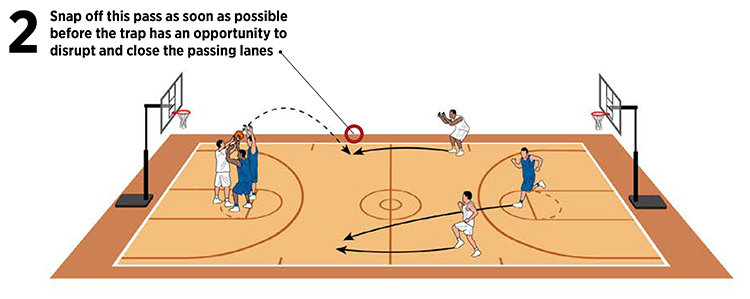 Rims at every level of play are 18 inches in diameter. Backboards are also the same size at each of these levels. A regulation backboard measures 6 feet wide and 42 inches (3.5 feet) tall.
Rims at every level of play are 18 inches in diameter. Backboards are also the same size at each of these levels. A regulation backboard measures 6 feet wide and 42 inches (3.5 feet) tall.
What is the Distance of the 3-Point Line?
The 3-point line distance varies among different levels of play. The NBA 3-point line is 23.75 feet from the hoop, 22 feet in the corners. The FIBA 3-point line is 22.15 feet from the hoop, 21.65 feet in the corners. The WNBA uses the same 3-point line as FIBA.
At the NCAA level, the 3-point line distance is 20.75 feet, for both men and women. At the high school level, the 3-point line distance is 19.75 feet, for both boys and girls. Junior high uses the same 3-point line distance as high school.
What is Distance of the Free-Throw Line?The distance of the free-throw line is measured from a point on the floor directly below the backboard. At the junior high, high school, NCAA, WNBA and NBA levels, the free-throw line is 15 feet away from this point.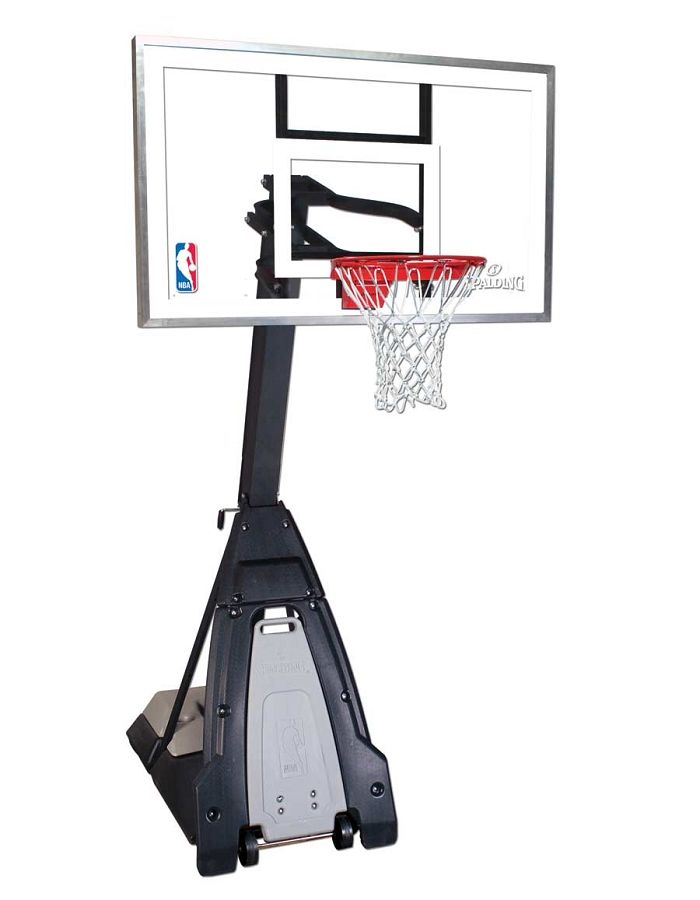 At the FIBA level, the free-throw line is actually a bit further—15.09 feet from the point.
At the FIBA level, the free-throw line is actually a bit further—15.09 feet from the point.
How Big is The Key?
The size of the key, also commonly referred to as “the paint,” varies among levels of play. In the NBA, it’s 16 feet wide. Same goes for the WNBA. In FIBA, it’s 16.08 feet wide. At the NCAA level, the key is 12 feet wide. High school and junior high school use the same size key as the NCAA.
READ MORE:
- Basketball Sizes: A Quick Guide for All Levels of Play
- What is AAU Basketball?
- 4 Youth Basketball Drills that Teach the Fundamentals
Share This Story!
Page load link
Basketball court markings: standards and norms
Author of the article
Khvatkov Dmitry
Consultant in the production of rubber coatings
Basketball field marking requirements are approved by the FIBA standard.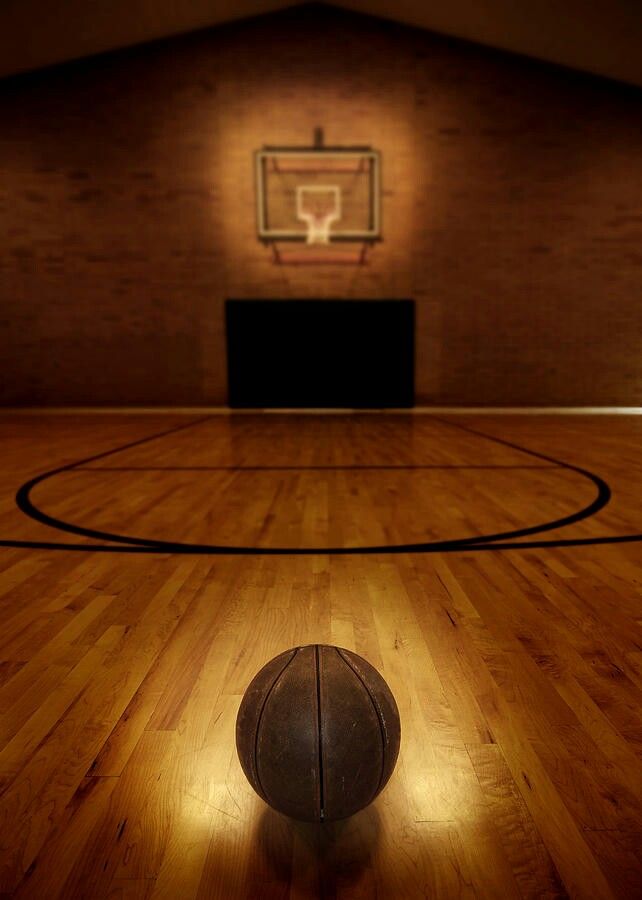 The site must be flat with a hard surface, free of bends, cracks and other obstacles. The accepted dimensions of the field are 28 m long and 16 m wide. By NBA standards, the field is slightly larger: 28.7 m (94' ft) long and 15.3 m (50' ft) wide.
The site must be flat with a hard surface, free of bends, cracks and other obstacles. The accepted dimensions of the field are 28 m long and 16 m wide. By NBA standards, the field is slightly larger: 28.7 m (94' ft) long and 15.3 m (50' ft) wide.
Areas not intended for international competitions may differ from accepted standards (for public use, in schools or universities, etc.) and usually vary from 20 to 28 m in length and from 12 to 16 m in width.
Basketball Court Marking Standards
Basketball court markings are conventionally divided into 5 components:
- Boundary lines. They are located along the perimeter of the site and set its size. The lines that run along the field are called side lines, and those that are behind the baskets are called front lines.
- Central line. Divides the court in half parallel to the front lines.
- Central zone. It is a circle and is placed in the middle of the center line, and, accordingly, in the center of the entire field.
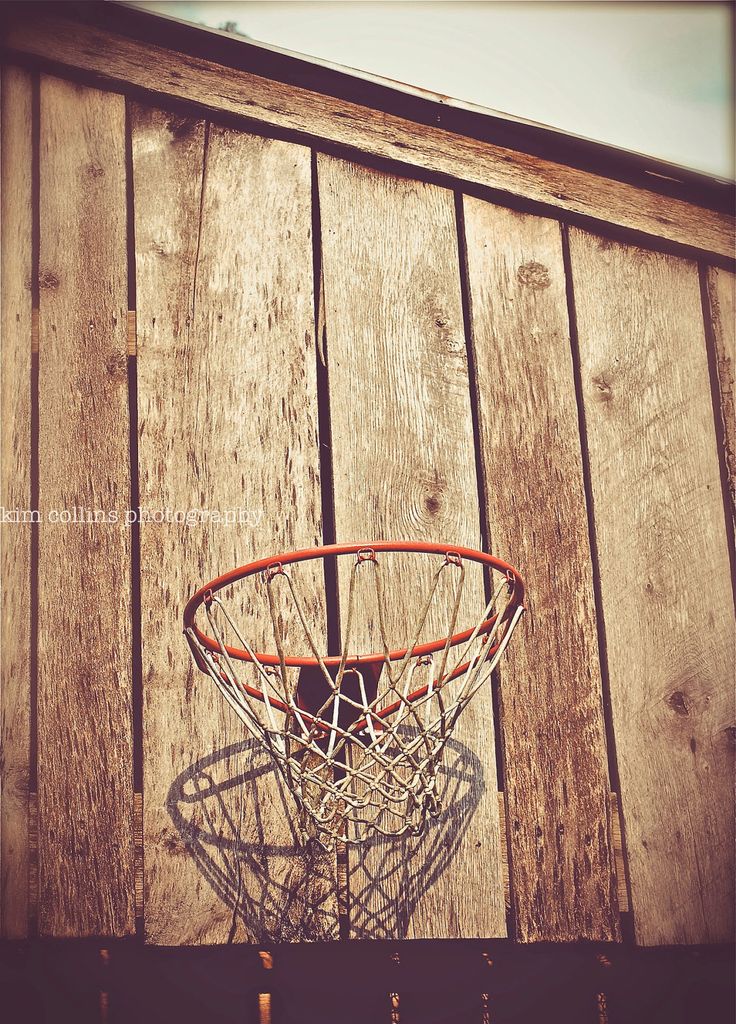
- Three-point line. It is a semi-ellipse and is located around the shields on both sides of the field. It limits the close range.
- Free throw line. It is located in front of the shields parallel to the front line and is limited on the sides by paint lines.
The standard line width is 5 cm. All outlines and lines must be of the same color (usually white) and be clearly visible from anywhere on the court.
Common lines
Common lines are used to limit the playing area of the court. The side lines (along the field) according to FIBA standards should be 28 m long, and the front lines - 16 m. For public areas, deviations from the accepted standards are allowed. Typically, basketball courts in schools or gyms are made from 20 m long and 12 m wide.
Central lines
The center line is parallel to the front and divides the field exactly in half. According to the standards - it should extend beyond the side lines by 15 cm on both sides.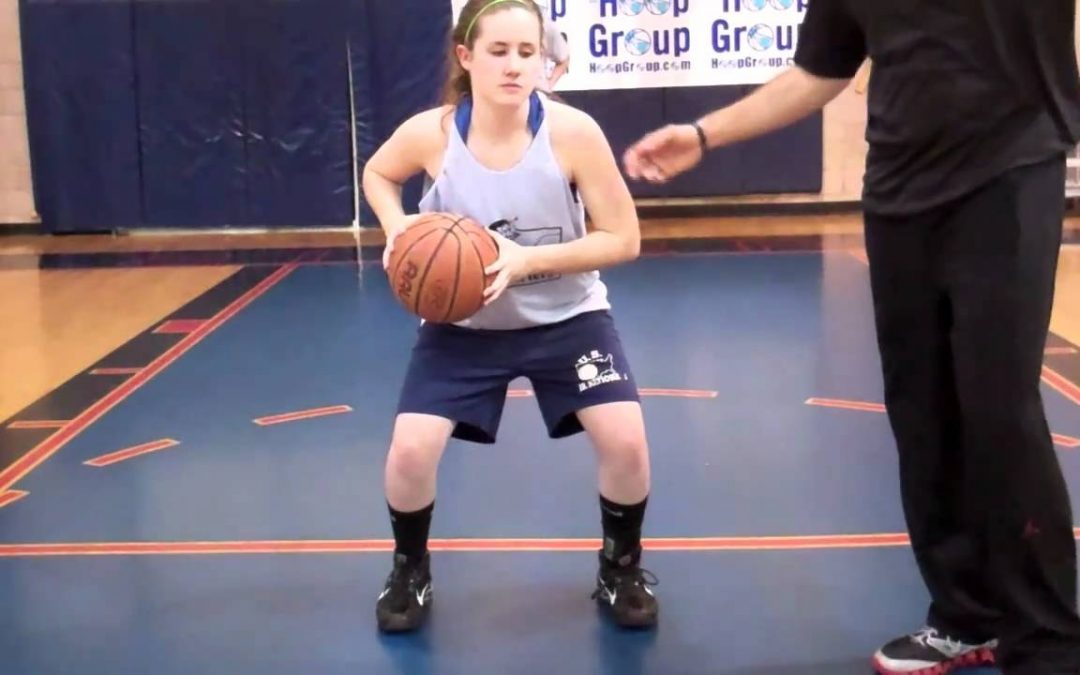
In the middle of the center line there is a circle with a diameter of 3.6 m, which limits the central zone of the field. In this zone, the ball is played at the beginning of the game.
Three-Point Line
Three-Point Lines are located around the backboards on both sides of the field and consist of two straight lines 2.9 long9 m and a semicircle. Straight lines run perpendicular to the front at a distance of 0.9 m from the side lines. Despite the fact that visually the distance from the ring to the side of the three-point line seems to be less than to its central part, the distance from the backboard to any point is 6.75 m.
Penalty lines
Penalty lines limit the nearest area at the backboard. They consist of a trapezoid and a free throw zone.
Despite the name, the "trapezium" is a rectangle (until 2009year it really was a trapezoid), which is located under the shield. Its dimensions are 5.8 meters long and 4.9 meters wide. The shield is located at a distance of 1. 575 m from the end line in the middle of the court. In front of the backboard, at a distance of 1.25 m, there is a semicircle that limits the area for picking up the ball.
575 m from the end line in the middle of the court. In front of the backboard, at a distance of 1.25 m, there is a semicircle that limits the area for picking up the ball.
At a distance of 4.225 meters from the backboard, the trapezoid zone ends and the free throw zone begins. It is a semicircle with a diameter of 3.6 m (like the central circle).
Paint zone lines
These lines are serifs on both sides of the trapezoid (parallel to the sidelines). They limit the areas for players who are fighting for the ball during a free throw.
Zones on the basketball field
The basketball court is divided into zones using markings. Each zone has its own specific rules.
Center circle
The center circle is used as a separate kick-off area at the start of the game. One representative from each team stand in a circle from their side and fight for the ball in a jump, after it is dropped by the referee. All players are exclusively on their side of the field, except for one who rebounds on the opponent's side.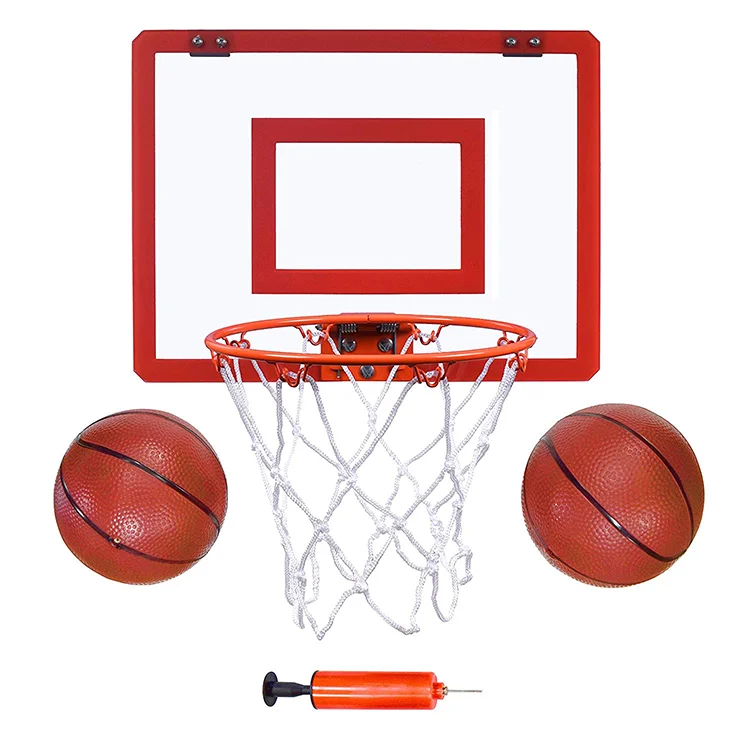
Neutral zone
The peculiarity of this zone is that as soon as the player of the attacking team with the ball crosses the center line and is on the side of the opponent, he cannot pass the ball to the player of his team who is on the other side of the field (i.e. behind center line on your side).
Three-point zone
The three-point line limits the near zone of the shot. Hitting the basket from outside the basket brings the team three points. If the throw was made inside the zone, then it brings two points.
Three-second zone
This is the zone in close proximity to the ring. It is called three-second, since the player of the attacking team cannot be in it for more than three seconds. Most balls are thrown in this zone, so when attacking, it provides maximum protection.
Free throw area
In controversial situations, a free throw is provided from this area. The player of the attacking team must score the ball without stepping over the line of the trapezoid.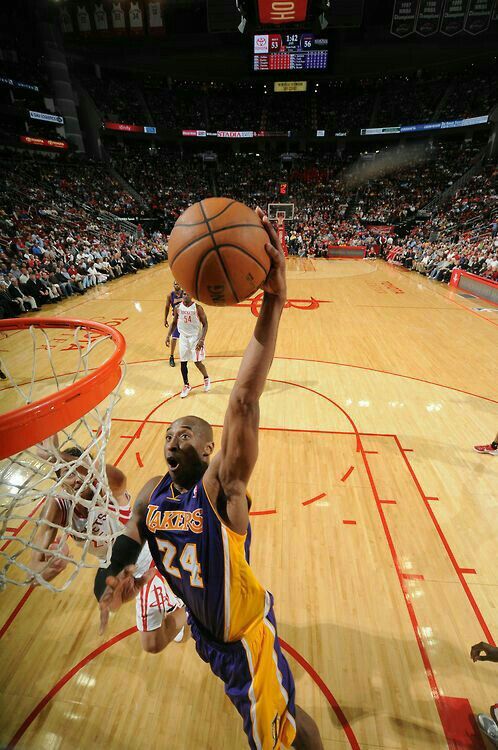 At the same time, the players of both teams are not in the three-second zone. They take up positions along the paint lines on the sides of the trapezoid and may not step outside the lines until the free throw shooter has shot the ball.
At the same time, the players of both teams are not in the three-second zone. They take up positions along the paint lines on the sides of the trapezoid and may not step outside the lines until the free throw shooter has shot the ball.
How to mark a basketball field?
Basketball field markings, whether it is an international competition court or an open-air amateur field, are best applied using special equipment. This will ensure the long life of the coating, the lines will not clog and will promote fair play.
You can order the marking of a basketball court in Moscow and the Moscow region from Rezkom. We will measure the premises and develop a design project for the field so that it complies with generally accepted rules and is convenient for operation. For more details, you can contact our manager by phone 8-495-64-24-111.
basketball rules
Basketball - ball sport played two teams of five people each. The goal of the players of each team throw the ball into the ring (basket) opponent and prevent the opponent from throwing to you.
Ring - It is located 3 meters from the floor (10 feet ) AT each team, as I said, 5 man on the field and 7 people in reserve, There are no restrictions on substitutions. For hit ball into the net from close range - 2 points are awarded, from a long distance, which is marked with a semicircle, is charged 3 points.
Dimensions basketball backboard for basketball standard sizes):
Shield for basketball is made of tempered glass 20 mm thick and has a length of 1.8 meters (maximum deviation + 30 mm) when measured in height 1.05 meters (maximum deviation + 20 mm ). In order to prevent injury on the bottom and side, height 35 - 45 cm, the ribs of the backboard is set cushion padding. According to FIBA protocol basketball backboard equipped illuminated, red, all around perimeter from the inside shield. Basketball backboard installed at a height of 3.05 meters - from the cover of the site to the basketball hoop, while lower edge of the basketball backboard located at a height of 2.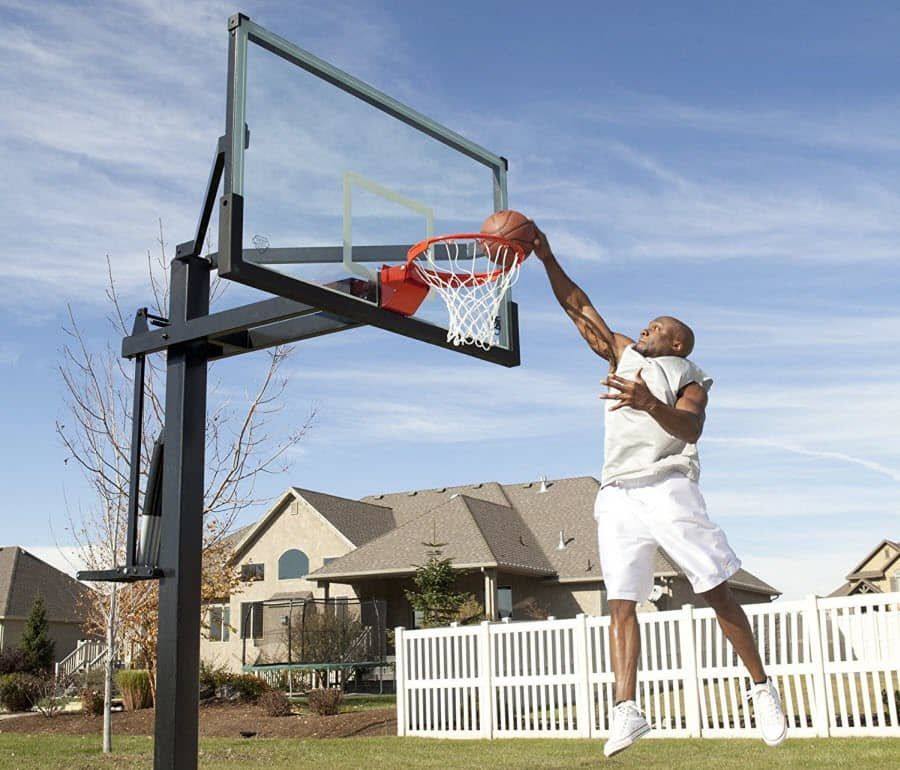 75 meters. Basketball shields with rings protrude above basketball court from the front lines at 1.2 meters. Inner diameter metal basketball hoops shock absorbers equal to 45 cm and thick 2cm basketball hoop represents a rope net - a basket without bottom 40 cm long. Basketball markings shield around the perimeter and ring zone area (rectangle size 59cm by 45 cm ) represents a white stripe 5 wide see
75 meters. Basketball shields with rings protrude above basketball court from the front lines at 1.2 meters. Inner diameter metal basketball hoops shock absorbers equal to 45 cm and thick 2cm basketball hoop represents a rope net - a basket without bottom 40 cm long. Basketball markings shield around the perimeter and ring zone area (rectangle size 59cm by 45 cm ) represents a white stripe 5 wide see
Violations out - the ball goes out of the playing area;
-
jogging - player in control of a live ball moves the legs over restrictions set by rules
-
violation dribbling, including carrying ball, double dribbling;
-
three seconds - the attacking player is in the free-throw zone more than three seconds at the time when his command owns the ball in the offensive zone;
-
eight seconds - team in possession of the ball did not take him out of the protection zone into the zone attacks in eight seconds;
-
24 seconds — the team was in possession of the ball more than 24 seconds and did not produce an accurate ring throw. The team receives the right to a new 24 second ownership, if the ball thrown at the ring is touched the arches of a ring or a shield, as well as in in the event of a foul by the defending team.
The team receives the right to a new 24 second ownership, if the ball thrown at the ring is touched the arches of a ring or a shield, as well as in in the event of a foul by the defending team.
-
closely guarded player - the player holds the ball for more than five seconds, while his opponent tightly patronizes;
-
violations returning the ball to the defense zone - team in possession of the ball in the offensive zone moved him to the protection zone.
Foul — This is a violation of the rules caused by personal contact or unsportsmanlike behavior. Species fouls:
-
personal;
-
technical;
-
non-athletic;
-
disqualifying.
Player, receiving 5 fouls (6 fouls in the NBA) in a game must leave the playing area and cannot take part in the match (but while he is allowed to stay on the bench). Player, received a disqualifying foul must leave the venue (player not allowed to stay on the bench).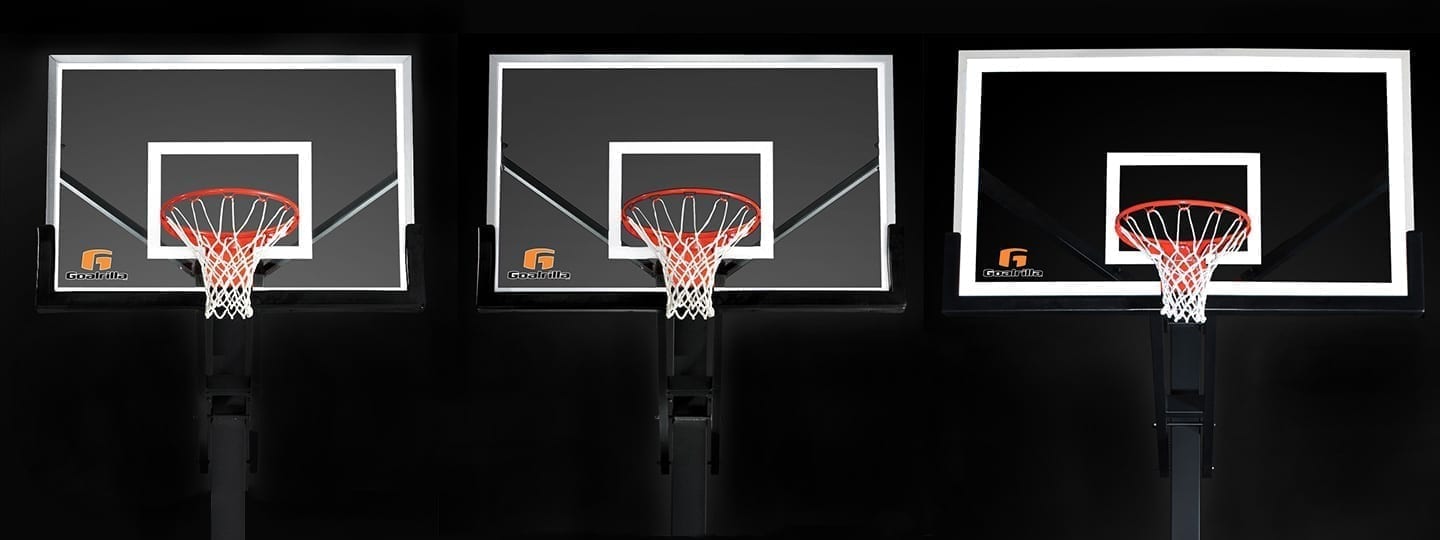
Trainer is disqualified if: he will commit 2 technical fouls;
Each foul counts as team fouls, for except for a technical foul, received by the coach, official team or a player on the bench spare.
Personal foul - foul, due to personal contact.
Punishment:
If a the foul is committed on a player who is not in the throw stage, then:
-
if the team did not score 5 team fouls or a foul is committed by a player, team who was in possession of the ball, the injured team produces throw-in;
-
in otherwise the injured player performs 2 free throws;
If a the foul was committed on a player in throw stage then:
-
if the throw was successful, it counts, and the affected player performs 1 free kick;
-
if the throw was unsuccessful, then the injured the player performs such a number free throws, how many points the team would have earned a throw successful.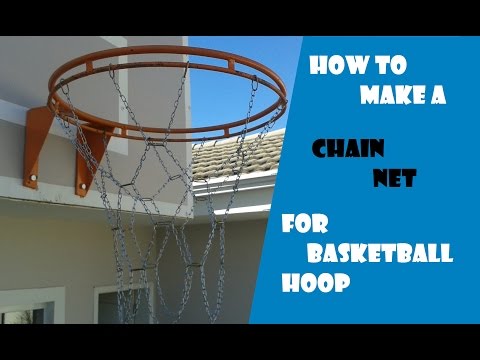
Non-athletic foul - a foul committed as a result of contact in which the player did not try play the ball within the rules.
Punishment:
If a the foul was committed on a player in throw stage, then do the same as in the case of a personal foul. If a the foul was committed on a player who was not in the throwing stage, then the victim the player performs 2 throws. After ball free throws throw-in by the offended team from outside the court on the continuation central line. Exception constitute fouls committed before the start first period. In this case, after free throws are held jump ball draw (as in normal game start). If a a player during one match commits 2 unsportsmanlike fouls, he must be disqualified.
disqualifying a foul is a foul, due to a blatant unsportsmanlike behavior. A disqualifying foul can get player, substitute, coach or official team face.
Punishment:
Quantity free kicks and throw-ins after them assigned similarly to non-sporting foul.